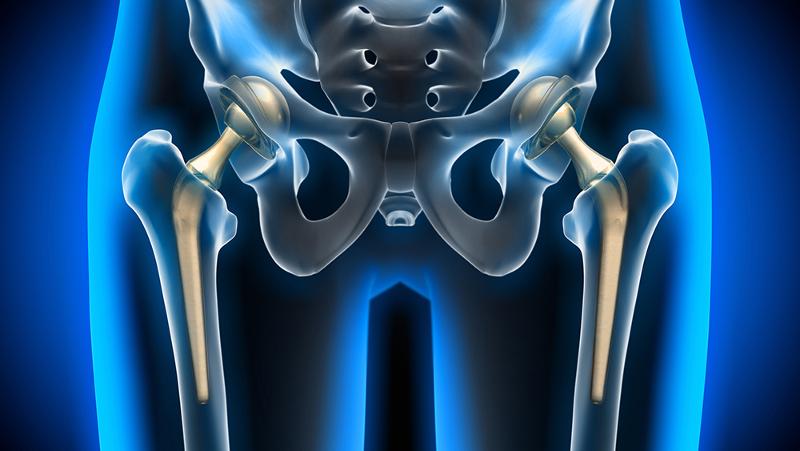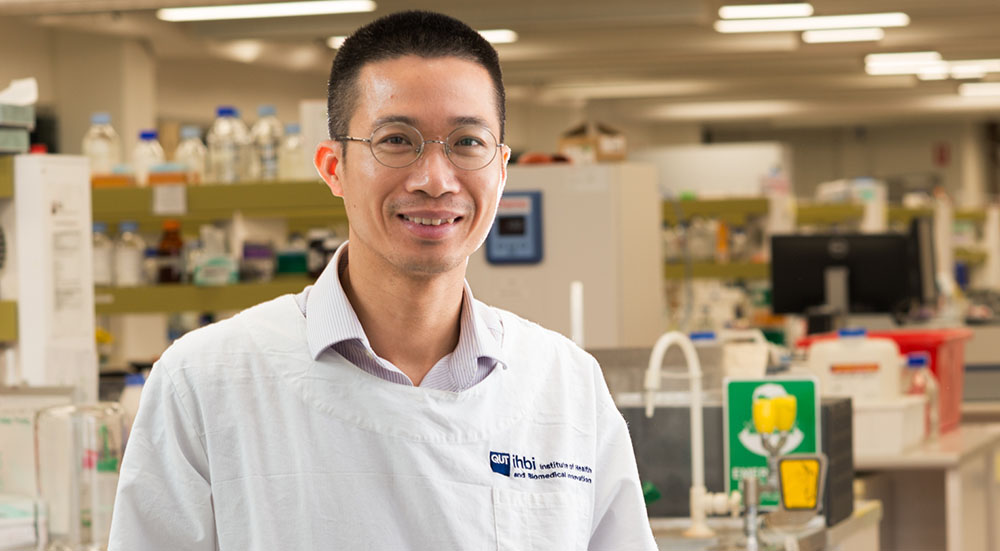
QUT scientists have tested in-vitro a promising new concept to treat infection-causing bacterial biofilms on hip replacement implants using a combination of silver nanoparticles and enzymatic lysis.
- Coating solution can be applied ‘in-situ’ to treat and retain infected implants
- Coating contains an agent to rupture bacterial biofilms and prevent re-infections
- In-vitro experiments show coating effective against ‘golden staph’ but more research needed
Dr Phong Tran from QUT’s Centre for Biomedical Technologies said that with further research, the process could prevent reinfection in implant-retention surgery.
“Our results showed that the treatment was effective in eradicating the bacteria, Staphylococcus aureus (‘golden staph’) biofilms grown on a titanium substrate,” said Dr Tran, a member of QUT’s School of Mechanical, Medical and Process Engineering.
“A small percentage of the more than 50,000 hip replacement surgeries in Australia each year become infected and, while some implants can be retained by implant-retention surgery, they can easily get reinfected and need to be replaced.”
Dr Tran said biofilms were communities of bacteria that protected themselves with a sticky outer layer that adheres to a surface, such as a hip joint prosthesis.
“Treating these biofilms is critically important in implant-retention surgeries to prevent reinfection and the need for more surgery to remove and replace the implant,” he said.
“Implant-retention surgery aims to eradicate the bacterial biofilms on the implants and on surrounding tissues. This is often associated with extensive debridement and long-term antibiotic therapy.”
Dr Tran said he and co researcher Dr Hien Tran had developed a novel use of the self-attaching property of polydopamine, combined with a known biofilm-rupturing agent and the anti-bacterial agent, silver.
“During the process of lysing (breaking down the outer coating of the cell) the biofilm, the soluble silver was reduced to non-soluble silver nanoparticles which, with the self-adhering polydopamine, formed an antimicrobial coating attached to the treated surface,” he said.

“The antimicrobial coating then would protect the implant from being re-infected.
“However, further optimisation is needed.
“When we tested our treated surfaces in complex environments having both mammalian and bacterial cells present, they were not as effective in killing bacteria.
“Our work also indicates the importance of using a relevant testing environment in future antimicrobial biomaterials research to optimise antimicrobial performance.
“This study was conducted only in the lab but it points the way to a new method of treating biofilm to avoid reinfection.”
In Situ Coatings of Silver Nanoparticles for Biofilm Treatment in Implant-Retention Surgeries: Antimicrobial Activities in Monoculture and Coculture was published in Applied Materials & Interfaces.
QUT Media contacts:
Niki Widdowson, 07 3138 2999 or n.widdowson@qut.edu.au
After hours: Rod Chester, 0407 585 901 or media@qut.edu.au.


